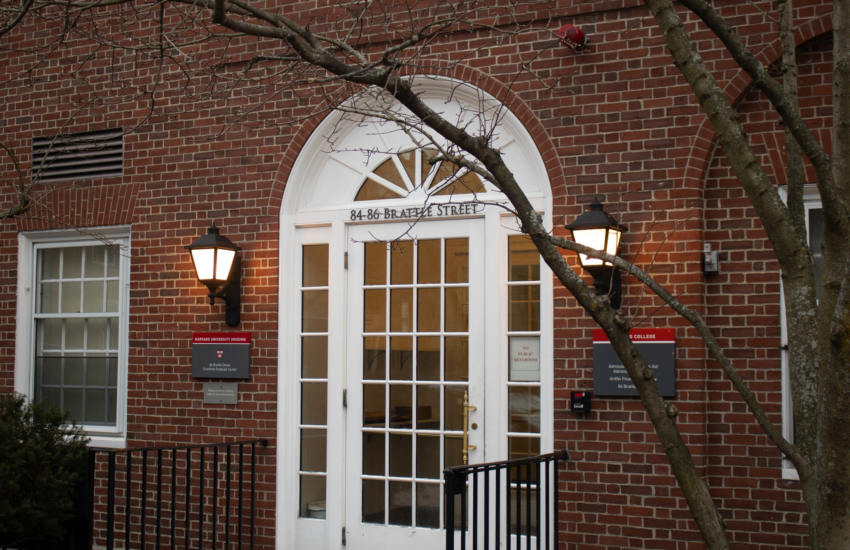News
Former Defense Department General Counsel Appointed Harvard’s Top Lawyer
News
Democracy Center Protesters Stage ‘Emergency Rally’ with Pro-Palestine Activists Amid Occupation
News
Harvard Violated Contract With HGSU in Excluding Some Grad Students, Arbitrator Rules
News
House Committee on China to Probe Harvard’s Handling of Anti-CCP Protest at HKS
News
Harvard Republican Club Endorses Donald Trump in 2024 Presidential Election
When Harvard College admits the Class of 2028 on Thursday, the admissions data released by the College might raise more questions than it answers about whether the fall of affirmative action and a prolonged crisis stemming from the University’s response to the Oct. 7 attack on Israel have changed Harvard’s appeal to prospective students.
Experts intend to look at the number of applications and the admissions rate as key indicators to understanding the extent to which Harvard’s reputation has been bruised by the events of the past six months.
But observers looking to understand the full impact of the Supreme Court’s ruling last semester might have to wait until later this summer when the University is expected to release the demographic data of students.
While experts expect to see a change from past years in the racial composition of the admitted class, Harvard — in a break from precedent — will not release racial and ethnic data on Thursday. The move comes as the University is increasingly wary of litigation from anti-affirmative action groups.
Mitchell J. Chang, a professor of education at UCLA and interim vice provost of diversity, equity, and inclusion, said he anticipates that Harvard will face heightened scrutiny if the racial composition of its admitted class – especially the number of Black students – does not change.
“I suspect that there will be drops,” Chang said. “Even in the testimony that Harvard gave, Harvard expected a significant drop.”
David Card, a Nobel Prize-winning economist hired as an expert witness for Harvard during the trial, developed simulations that showed African American students would have made up 6 percent of the Class of 2019 if the University eliminated the consideration of race from its admissions process for the Class — less than half of the 14 percent that were actually represented.
Similar models by Peter Arcidiacono, an economist at Duke University hired as an expert by Students for Fair Admissions, projected a decline to 7 percent.
Dan Lee, founder of Solomon Admissions Consulting, said Harvard may also see an increase in the proportion of Asian American applicants who are accepted.
“I would predict that the percentage of Asian American students at Harvard is going to go up by about 10 percent,” Lee said.
Still, Chang said Harvard’s efforts after the decision release may work to increase the yield rate of students from underrepresented backgrounds and “offset that expected drop” in the admit rate of those students.
Arcidiacono, the Duke economist, also said that he expects to see an increase in the proportion of both Pell Grant-eligible and first-generation students admitted to the Class of 2028.
The Early Action round of admissions, released in mid-December, saw 15.5 percent of accepted applicants come from first-generation backgrounds — an increase of approximately 1.5 percentage points from the year before.
Julie J. Park, an associate professor of higher education at the University of Maryland who served as a consulting expert for Harvard during the admissions lawsuit, said the changes come among multiple shifts in focus that Harvard will turn to given the admissions team can not look at race.
“They will presumably lean somewhat more on the information that they can see, which is going to be socioeconomic background, high school context, the context of opportunity that a student is coming from,” Park said.
Harvard has kept its test-optional policies through the admitted Class of 2030, despite a recent shift to testing requirements from other Ivy League schools. Chang said that Harvard’s test-optional policies may help to keep the application pool in a “sufficient state” and mitigate a possible fall in application numbers.
While the fall of affirmative action has some precedent — the University of California system eliminated the practice in 1995 and witnessed a sharp drop in the enrollment of underrepresented groups shortly thereafter – economist Richard D. Kahlenberg ’85 said that Harvard’s situation is unique.
When public institutions in California eliminated the practice, said Kahlenberg, who also served as an expert witness for SFFA, they were forced to compete “with one hand tied behind their back” for students from underrepresented groups with institutions that were able to consider race in their admissions processes. But now, race-conscious admissions are prohibited throughout the country.
“Harvard and all universities today will be competing on a level playing field where no one who follows the law can use racial preferences,” he said.
As a result, it will not take Harvard as long as it took schools like UCLA or the University of California, Berkeley to create a diverse class without race-conscious admissions, according to Kahlenberg.
But as decisions for thousands of waiting applicants rapidly approach, Park said that much is up in the air until Harvard releases the final composition of its admitted Class of 2028.
“Race conscious admissions has been severely restricted, but I would not say it’s necessarily dead,” Park said. “How does that show up in the numbers is anyone’s guess.”
—Staff writer Elyse C. Goncalves can be reached at elyse.goncalves@thecrimson.com. Follow her on X @e1ysegoncalves or on Threads @elyse.goncalves.
—Staff writer Matan H. Josephy can be reached matan.josephy@thecrimson.com. Follow him on X @matanjosephy.
Want to keep up with breaking news? Subscribe to our email newsletter.

